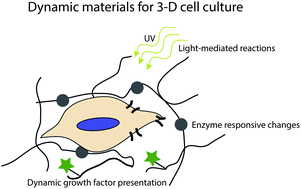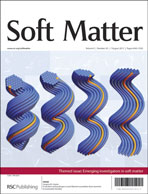Tunable and dynamic soft materials for three-dimensional cell culture
Abstract
The human body is complex and hierarchically structured, composed of cells residing within the extracellular matrix (ECM) of tissues that are assembled into organs, all working together to complete a given function. One goal of current biomaterials research is to capture some of this complexity outside of the body for understanding the underlying biology of development, repair, and disease and to devise new strategies for regenerative medicine or disease treatment. Polymeric materials have arisen as powerful tools to mimic the native ECM, giving experimenters a way to capture key aspects of the native cellular environment outside of the body. In particular, dynamic materials allow changes in the properties of these ECM mimics during an experiment, affording an additional degree of control for the experimenter. In this tutorial review, the basic cellular processes of cell migration, proliferation, and differentiation will be overviewed to motivate design considerations for polymeric ECM mimics, and examples will be given of how classes of dynamic materials are being used to study each cellular process.

- This article is part of the themed collections: Emerging Investigators and Tutorial Reviews in Soft Matter

 Please wait while we load your content...
Please wait while we load your content...